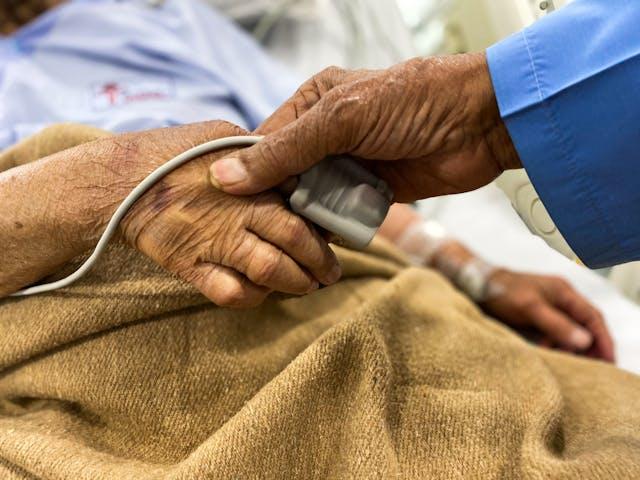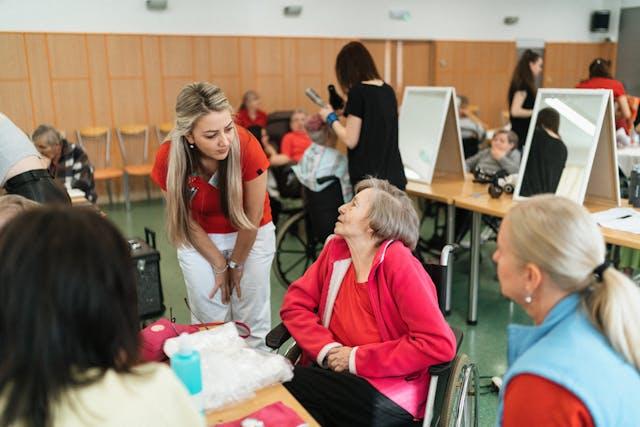Medical Tourism in Retirement: Healthcare Costs, Opportunities and Risks

The medical tourism market has grown significantly, with patients worldwide choosing to travel outside of their country for medical care, both necessary and elective. In the US, the government estimates that more than 150,000 Americans each year travel abroad seeking healthcare.
One emerging segment within this sector is older patients who elect to get their care overseas. This trend toward medical tourism among retirees exists at least partly because they want access to affordable, quality healthcare services since costs continue to rise. This article examines the opportunities and risks of medical tourism for retirees, factors to consider, real-life examples, and alternative strategies for managing healthcare expenses.
What is Medical Tourism, and Why is it Attractive for Seniors?
Medical tourism involves traveling to another country to receive medical care. The countries chosen for medical tourism are often tourist destinations that happen to offer medical care at a lower cost than in the tourist’s home country.
For seniors on fixed incomes facing increasing healthcare costs as they age, medical tourism can be an appealing way to access quality medical care that stretches their retirement budget. Destinations like Costa Rica, Singapore, Canada, Thailand, and even India offer healthcare services comparable to those in the U.S. at a substantially reduced cost.
Medical tourism allows seniors to combine low-cost medical care with a vacation. It allows the rest and rehabilitation part of medical care to occur in a desirable destination.
When medical care conflicts with a patient’s cultural or religious practices, it can become a reason for patients not to get the medical care they need. Traveling to a country where the culture more closely aligns with the patient’s concerns can alleviate those concerns.
Many seniors favor a holistic approach to medicine. Medical tourism can connect them with facilities that emphasize practices like naturopathy, ayurvedic medicine, or acupuncture.
What are the Top Medical Tourism Destinations for Retirees?
While the list of countries offering affordable healthcare is quite long, several countries have emerged as popular medical tourism locations for seniors. These countries provide affordable healthcare, state-of-the-art medical facilities, and comfortable living options. These destinations also provide hospitals with English-speaking staff, prestigious international accreditations, and doctors who specialize in procedures seniors seek, such as cataract surgery, dental work, and hip and knee replacement.
Costa Rica
According to the American Journal of Medicine, Costa Rica is the top location for medical tourism. It combines the best of medicine and tourism. With doctors trained in the US and Europe, Costa Rica provides competitive medical care in a location known for its resorts and the natural beauty of its rainforests.
Costa Rica specializes in low-cost, high-quality dental and cosmetic procedures and is also becoming known as a destination for cancer therapy and bariatric surgery.
Thailand
People visiting Thailand for medical tourism can get care that costs 25 to 75 percent less than the same care in the US. But it’s not just the low price that attracts seniors. Thailand is home to highly trained and experienced English-speaking doctors specializing in dental care and orthopedics.
Thailand has also made impressive advances in using advanced medical devices and treatment options. At the same time, it also boasts tropical weather, beautiful beaches, and modern cities that can satisfy any tourist.
Mexico
Mexico is a very popular tourist destination for its resorts and cultural areas, but it’s also an attractive medical tourism spot for several reasons. Like other destinations, patients flock to Mexico for high-quality, low-cost dental and cosmetic procedures.
But Mexico also offers low-cost prescription drugs in a location very close to the United States, where drugs are considerably more expensive. The Joint Commission licenses seven hospitals in Mexico’s health system, saying that it has the same standard used to accredit U.S. hospitals. You can contact the Joint Commission to find out which hospitals have licenses and accreditation from them.
Malaysia
Like other countries, Malaysia can boast world-class medical facilities and low-cost healthcare compared to the US. However, Malaysia has some other characteristics that differentiate it as a medical tourism destination.
Malaysia has seen a steady rise in the number of healthcare professionals working in its system in the last decade. The majority of those healthcare workers are female, which paints Malaysia as a female-friendly medical destination for both doctors and patients.
Unlike other destinations that focus on dentistry or cosmetic surgery, Malaysia is best known for fertility and cardiology. Its capital, Kuala Lumpur, is home to the Cardiac Vascular Sentral Kuala Lumpur and the KL Fertility and Gynecology Centre, both of which many experts consider the best in Asia in their respective fields. Malaysia’s reputation as a cultural melting pot means that American citizens of Indian, Chinese, or Malay descent can find medical care that aligns with their cultural values.
Panama
Like Mexico, Panama is easily accessible for North American patients seeking affordable medical care. Like Costa Rica, Panama has beautiful beaches and cultural sites that can provide a restful vacation. Panama maintains two healthcare systems: a private system for specialized care and a public system for basic healthcare, check-ups, and health education. Even the currency is pegged to the U.S. dollar, so cost comparison is easy.
Panama offers healthcare to its patients across a variety of disciplines, including geriatrics. Most medical staff have been trained abroad and are English-speaking, which removes language barriers for older Americans. Panama has hospitals that have received Joint Commission accreditation.
How Much Can Retirees Really Save Through Medical Tourism?
Medical tourism can offer considerable cost savings. Procedures in medical tourism destinations often cost 50-70% less than in the US, especially for elective surgeries that health insurance sometimes doesn’t cover.
For example, a knee replacement that costs in excess of $30,000 in the U.S. might cost roughly $12,000 in a premier medical tourism destination like Costa Rica. Even when considering travel costs, seniors can save thousands of dollars, making medical care much more accessible. Thoroughly research options and get detailed cost estimates before scheduling a medical procedure overseas.
Most medical tourists pay for the medical care they receive during service. However, some US-based health insurers have alliances with facilities outside of the United States, meaning that retirees can take advantage of that if their insurer participates.
What Kinds of Procedures are Well-Suited for Medical Tourism?
While medical tourism isn’t appropriate for all health situations, many standard procedures seniors want and need can be good candidates. Medical tourists often purchase elective procedures such as joint replacements, cataract removal, dental implants and dentures, and cosmetic surgeries because they can be scheduled in advance and planned much the way you would plan a typical vacation.
More complex procedures, like heart surgery, may also be options in leading medical tourism destinations with world-class facilities, even though they are driven by more immediate medical needs. The key is matching the procedure to high-quality, accredited providers and facilities.
What Risks and Drawbacks Should Retirees Be Aware Of?
While the cost savings of getting medical procedures in another country are very attractive, medical tourism does carry some risks that retirees should carefully weigh before deciding to travel. Quality of care can vary, so it’s critical to thoroughly vet providers. It’s essential to check the qualifications of doctors and the accreditations of healthcare facilities both here and abroad.
Follow-up care can also be challenging if issues arise after returning home. This can also eat away at cost savings if an unexpected return trip is required. If anything goes wrong that could present a possible legal or malpractice situation; legal recourse is dependent on the laws of the country where the procedure was done and how those laws relate to non-citizens. Seniors should also consider the risks and challenges of travel. This is especially important when dealing with mobility issues or serious health conditions.
Countries may also have different standards for medical ethics. Many countries have facilities and practitioners that operate ethically, but one country may consider a drug or procedure experimental, while in another country — it may be approved. Seniors should be informed about these standards before scheduling treatment.
How Can Retirees Evaluate and Choose Medical Tourism Options?
Retirees considering medical tourism should extensively research the destination country and the facility they plan to use. This can guide the planning phase of determining where to stay and for how long. Be sure to look into practical matters like travel, lodging options, and language barriers.
Key factors to consider include quality of facilities, physician training and experience, accreditations such as Joint Commission International, and past patient experiences. Detailed cost estimates can help you understand what services and amenities are omitted. Consulting a reputable medical tourism facilitator can help navigate the available options.
What Role Can Medical Tourism Play in a Broader Retirement Healthcare Strategy?
While medical tourism is not the answer for all ailments, for some retirees, it may be an effective way to control healthcare costs as part of an overall strategy. It can be combined with options like Medicare Advantage, supplemental insurance, and health savings accounts (but check to see if your health savings are tax-deductable in another country).
Retirees should take a realistic look at their healthcare needs, budget, and risk tolerance. This will help them determine if and how medical tourism fits their plans. There are private companies and medical concierge services that can assist seniors in identifying foreign healthcare providers that can cost-effectively meet their needs.
Are There Alternatives to Medical Tourism for Managing Healthcare Costs in Retirement?
While medical tourism can be a cost-saving option, there are other ways for retirees to manage health expenses. Choosing a retirement destination with lower healthcare costs and a lower overall cost of living can help your healthcare dollars go further. Utilizing Medicare Advantage and other supplemental insurance options can help defray expenses. But, knowing what each type of plan covers is essential before entering into one. For example, Medicare Advantage may cover procedures that Medicare does not but may have a more restrictive network of doctors.
Maintaining a healthy lifestyle to prevent health issues can prolong your overall health, keeping the heart and joints healthier for longer. Planning ahead for long-term care needs, like purchasing long-term care insurance, can also defray the costs of chronic medical problems. Retirees should explore a variety of options to find the best fit for their individual circumstances.
A Great Option for Seniors
Medical tourism offers a unique opportunity to access healthcare that may otherwise be cost-prohibitive. However, it’s not without its risks and drawbacks. Medical tourism should not be entered casually but should be considered part of a comprehensive retirement healthcare strategy.
Healthcare systems worldwide are not created equal, and they all have strengths and limitations. By understanding the options and taking a proactive approach, retirees can make informed decisions about managing their healthcare needs and costs in retirement. Under the right circumstances, medical tourism can provide seniors with a cost-effective option for high-quality healthcare.
Thanks for reading! Do you want to create thought leadership articles like the one above? If you struggle to translate your ideas into content that will help build credibility and influence others, sign up to get John’s latest online course “Writing From Your Voice” here.



